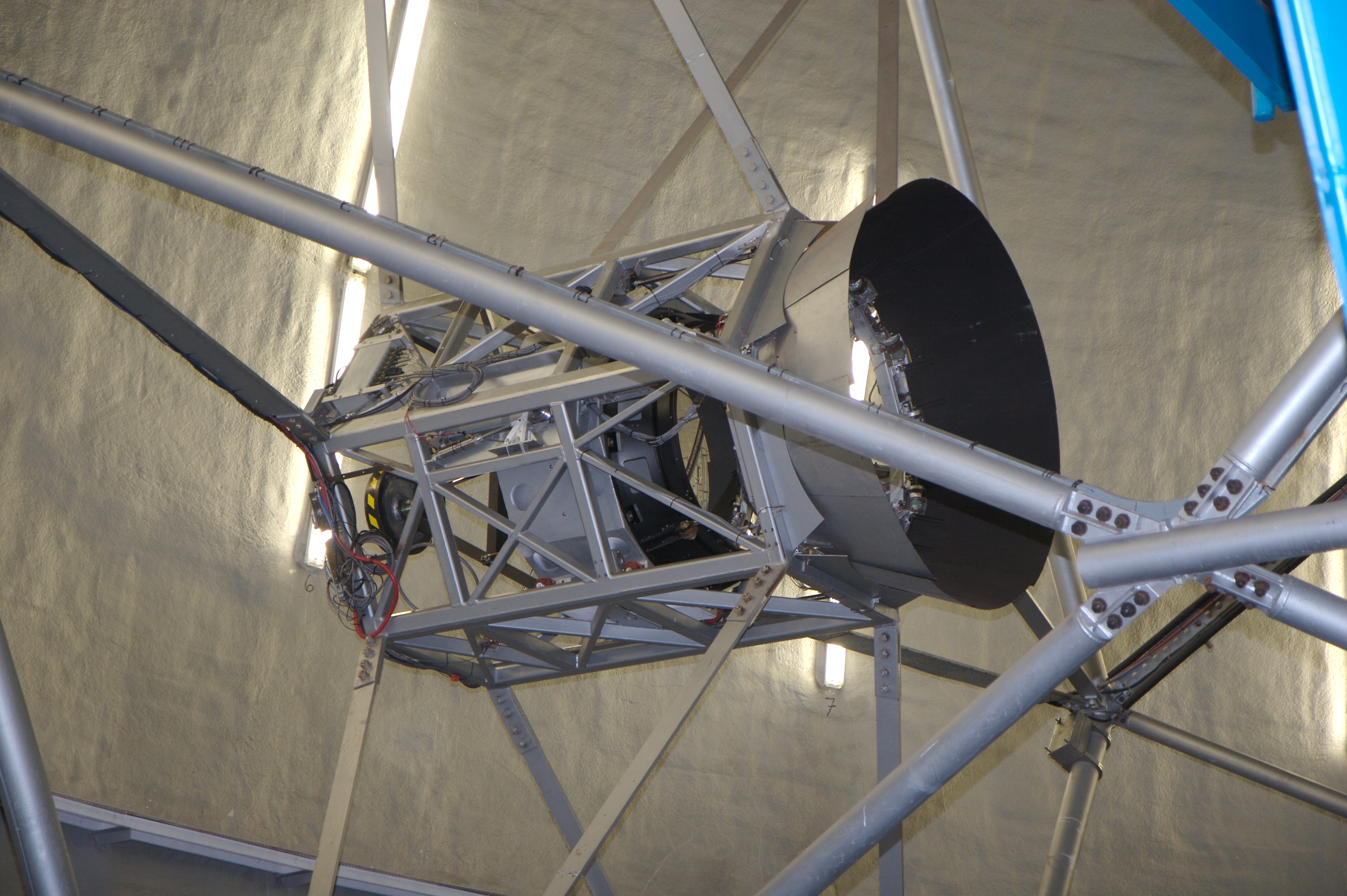Secondary mirror on:
[Wikipedia]
[Google]
[Amazon]

 A secondary mirror (or secondary) is the second deflecting or focusing mirror element in a
A secondary mirror (or secondary) is the second deflecting or focusing mirror element in a

 A secondary mirror (or secondary) is the second deflecting or focusing mirror element in a
A secondary mirror (or secondary) is the second deflecting or focusing mirror element in a reflecting telescope
A reflecting telescope (also called a reflector) is a telescope that uses a single or a combination of curved mirrors that reflect light and form an image. The reflecting telescope was invented in the 17th century by Isaac Newton as an alternati ...
. Light gathered by the primary mirror
A primary mirror (or primary) is the principal light-gathering surface (the objective) of a reflecting telescope.
Description
The primary mirror of a reflecting telescope is a spherical or parabolic shaped disks of polished reflective meta ...
is directed towards a focal point
Focal point may refer to:
* Focus (optics)
* Focus (geometry)
* Conjugate points, also called focal points
* Focal point (game theory)
* Unicom Focal Point
UNICOM Focal Point is a portfolio management and decision analysis tool used by the p ...
typically past the location of the secondary. Secondary mirrors in the form of an optically flat ''diagonal mirror'' are used to re-direct the light path in designs such as Newtonian reflector
The Newtonian telescope, also called the Newtonian reflector or just a Newtonian, is a type of reflecting telescope invented by the English scientist Sir Isaac Newton, using a concave primary mirror and a flat diagonal secondary mirror. Newton' ...
s. They are also used to re-direct and extend the light path and modify the final image in designs such as Cassegrain reflector
The Cassegrain reflector is a combination of a primary concave mirror and a secondary convex mirror, often used in optical telescopes and radio antennas, the main characteristic being that the optical path folds back onto itself, relative to t ...
s.
The secondary is typically suspended by X-shaped struts (sometimes called a "spider") in the path of light between the source and the primary, but can be mounted on other types of mounts or optical elements such as optical windows, or schmidt and meniscus corrector plates. Employing secondary mirrors in optical systems causes some image distortion due to the obstruction of the secondary itself, and distortion from the spider mounts, commonly seen as cross-shaped diffraction spikes radiating from bright stars seen in astronomical images.
See also
*List of telescope parts and construction Hardware Accessories
*Finderscope
*Iron sight
* Reflector (reflex) sight
* Cheshire collimator: A simple tool to collimate a telescope
Control
*Clock drive
* GoTo
Mechanical construction
*Mirror support cell
* Serrurier truss
* Silvering
Mounts
...
* Mirror mount
* Point spread function
Mirrors
{{Optics-stub